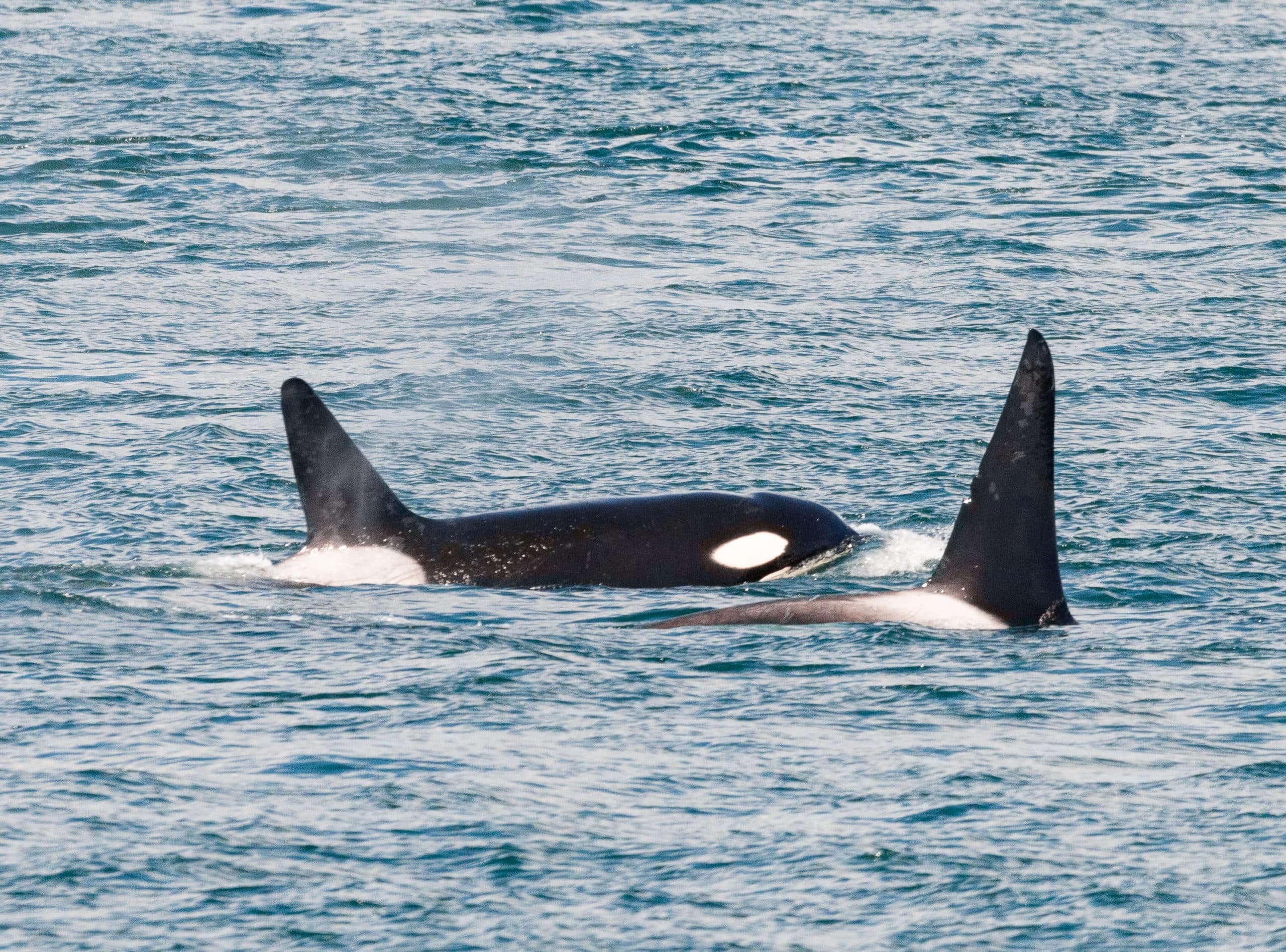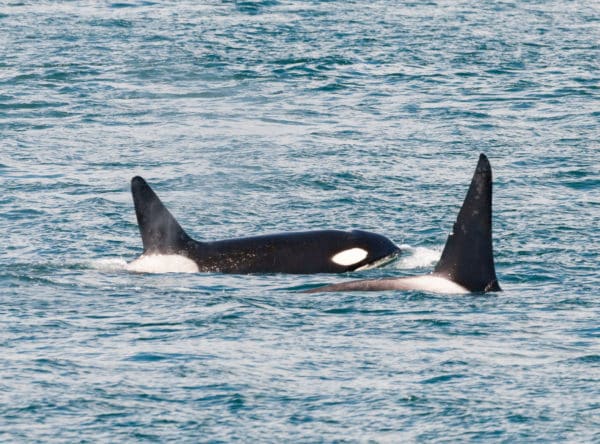Blog written by: Marisa Price- Senior Naturalist
Weeks of: April 1st – 14th
It’s official, the covered vessels season is underway and the first few weeks have been packed with wildlife sightings! We started off with a beautiful day on the water viewing the T036A’s west of Race Rocks. The T036A’s are a part of the Bigg’s Orca ecotype, these guys cover a large range spanning from California to Alaska. Bigg’s Killer Whales numbers peak in April-May and again in August-September with year round sightings steadily increasing. This is a trend that has persisted over the last 30 according to The Orca Network. We also had the pleasure of viewing T049C and T049A2 just south of Trial Island. T049C and T049A2 are also a part of the Bigg’s Killer Whale ecotype.
T49C (front) T49A2 (back)
On April 14th we were able to see our mystery sea otter! After the fur trade, the sea otter population was sadly hunted to extirpation in the waters surrounding Vancouver Island. This was because sea otters have extremely dense fur, 1,000,000 hair follicles per square inch! Between 1972 and 1979, eighty nine sea otters were reintroduced to Vancouver Island. Today there are thousands around the northern parts of the island, yet we only have two in the waters surrounding the southern half of Vancouver Island. Sea otters are much larger than the northern river otters that we often see scampering around; river otters average a weight of seventeen pounds whereas the sea otter boasts an impressive average of one hundred pounds.
All of our tours that have headed out west in the past few weeks have also had the excitement of seeing a host of northern elephant seals on Race Rocks! Race Rocks is usually dominated by a certain large male named Bernard who is estimated at weighing six thousand pounds. This year, Bernard hasn’t been seen, but there has been another large male on the rocks. The elephant seal pups have been sunning on the boat ramp. The elephant seal mothers will stay alongside her pups for four to five weeks before leaving her one month old pup to make it on its own. The males may have a tough go at life, avoiding other large males as a fight may ensue; although the males will not become sexually mature for about seven years, the older males will see them as competition and try to kill the pup. Competition for breeding in elephant seals is extremely high, with one mature male having a harem of females and dominating one area.
Want to see the lively wildlife of the Salish Sea waters? Book a tour now and we’ll look forward to welcoming you on board!












